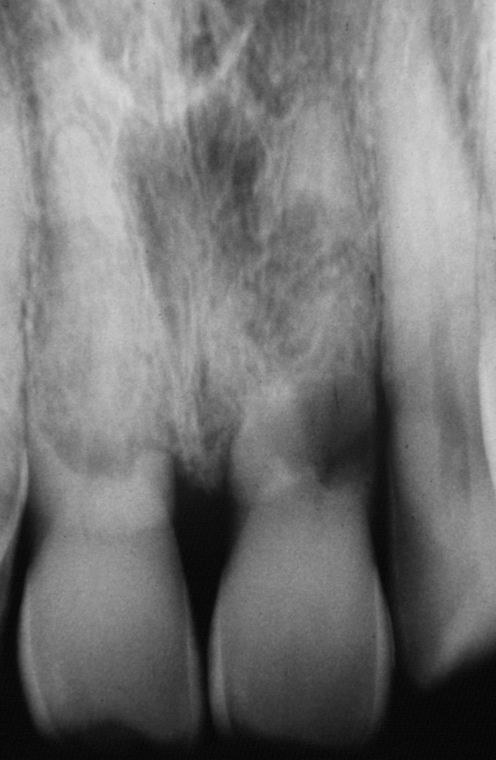Replacement resorption - Diagnosis




Replacement resorption is usually a late complication after trauma. Clinically, external replacement resorption is symptom-free and is detected radiographically when replacement of dental hard tissues by bone is seen. Unlike external inflammatory root resorption, there is usually no radiographic sign of inflammation in the bone in the area of the root resorption. A tooth undergoing external replacement resorption is ankylotic and gives a metallic sound to percussion with a mirror handle.
Replacement resorption is usually a slow process and it may take several years before the root is resorbed so extensively that the remaining coronal part of the tooth becomes mobile.